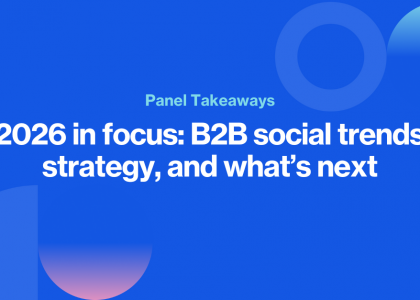The winds of change are blowing and might carry some of your best employees out the door. Signs indicate that we may be headed into another Great Resignation—a repeat of the mass upswing of people quitting their jobs in 2021. In times of historically low employee satisfaction levels, brand perception has never been so important.
A strong employer brand can reduce the cost per hire by as much as 50%, and a negative reputation can cost a company as much as 10% more per hire. Improving your employer branding is worth the effort, but you can’t just impose a top-down change in how prospective hires see you. Change has to come organically through your actions and communications, as the examples in this post will show us.
What is employer branding?
Your employer branding is the image you cultivate among current, past, and prospective employees. It’s all of the things a job applicant thinks about when they imagine what it might be like to work for your company. Employer branding is critical to marketing yourself to the top talent in your industry.
Your values, corporate culture, social media presence, word-of-mouth from current and former employees, and countless other factors contribute to your employer’s brand image. Some of these may be outside your control, so it’s all the more important to follow a deliberate strategy to influence perceptions positively at every possible opportunity.
Successful branding is often centered on a unique value proposition, an exceptional quality that sets your company apart from its competitors. This unique value proposition can be a helpful guiding principle for messaging and targeting decisions.
Why employer branding matters
With more than 8 out of 10 job seekers evaluating an employer’s reputation before deciding whether or not to apply, careful brand management is essential to an optimized recruitment process that hires the best possible candidates. Here are a few of the specific ways in which employer branding can make a critical difference:
Attracts top talent. Candidates with skills and experience can afford to research their potential future employers and be picky about where they apply. A positive and authentic employer brand will help you match with high-quality candidates who will fit in with your company culture.
Improves business performance. You can expect a motivated, knowledgeable workforce with high morale to deliver excellent outcomes.
Builds brand awareness. Strong employer branding has a positive snowball effect. It gets attention from customers and prospective employees and drives engagement, which, in turn, will help you spread even more awareness of your brand.
Increases employee retention rates. When your branding is helping you recruit competent, compatible new hires, you’ll have less employee dissatisfaction and lower turnover rates.
Streamlines reputation management. Managing the occasional inevitable public relations problem is much easier when you have a recognizable, positive brand image. Employer branding can also help you leverage employee advocacy and similar strategies for an organic approach to taking control of a runaway social media narrative.
Top 7 employer branding examples
1. Salesforce
The CRM giant Salesforce sets a flagship example of employer branding done right with its highly intentional “Salesforce Ohana” concept. This concept emphasizes treating customers and coworkers like family (which is what “ohana” means in Hawaiian), significantly boosting employer and customer engagement. Salesforce backs this up with events, activities, and a corporate culture that often leads to spontaneous and heartfelt employee advocacy posts on LinkedIn and other social media sites.
2. PwC
International accounting and professional services firm PwC faces the challenge of attracting new generations of talent to an old-school firm with a long history. One essential part of their pragmatic approach to employer branding is hosting a “Talent Community” for entry-level and experienced professionals that keeps job seekers connected to PwC events and job openings and makes them visible to recruiters. They can also share employee stories and networking advice on platforms like Instagram and TikTok.
3. Airbnb
Airbnb has built its employer brand around a powerful value proposition that plays directly to its identity as a vacation rental platform: a flexible remote work policy that allows employees to live and work virtually anywhere. They worked directly with local governments to make it easier for employees to stay for extended periods in more than 170 different countries, a huge perk that many beneficiaries are naturally inclined to post about on social media.
4. Starbucks
The ubiquitous coffee chain Starbucks is a familiar location to many of us. To give job candidates a better glimpse of what it’s like to work behind the counter and in the corporate offices, Starbucks runs accounts on Instagram and X that are dedicated to promoting job opportunities, the Starbucks work experience, and the various benefits they offer to their team members (who they refer to as “partners”). This strategy is not just about visibility; it also streamlines HR efforts by providing potential employees with direct insights into the company culture and recruitment process.
5. Clifford Chance
The leading multinational law firm, Clifford Chance, has a stellar reputation for being a great workplace. It has won a “Most Attractive Employer” award for the legal services sector two years in a row, along with other prestigious recognitions.
Clifford Chance achieves this with the help of a dedicated global employer brand team and a deliberate strategy that involves multiple online channels. In addition to posting hiring announcements and staff interviews on social media platforms like Instagram and X, they also promote relevant content on job sites like Glassdoor and Indeed.
6. Shopify
Shopify emphasizes a “Digital by Design” remote work philosophy in its employer branding. It introduces applicants through a plainspoken careers page outlining its ethos and expectations. Shopify is straightforward about the kind of employees it wants on its team, which helps build a strong affinity with candidates who feel like they’re the kind of person Shopify is looking for.
7. HubSpot
HubSpot’s sales and marketing platform bases its employer branding on its “Culture Code,” a manifesto that lays out its commitment to values like transparency, empathy, and adaptability. The HubSpot team presents this Code in an entertaining slide deck that’s easy to share on social media, making it a highly effective tool for spreading positive brand awareness.
To show off the kind of work environment the Code fosters, they maintain “HubSpotLife” hashtags and accounts on various platforms, promote thought leadership content from their developers, and share employee-generated videos about HubSpot careers on TikTok.
How to enhance employer branding using social media
Social media is one of the best tools for reaching your audience and communicating employer branding. Everything you share should reflect what sets your company apart—flexibility, inclusivity, innovation, or growth—creating a unified brand narrative.
One way to build a strong narrative around your company values is to leverage employee advocacy campaigns. In addition to using their networks to speed up sales, employees can also use them to post personal stories, company content, or authentic experiences that humanize your brand.
Of course, you can’t go around your office asking people to share your latest post. To make employee advocacy a long-term, scalable success, consider an automated tool like Oktopost. Oktopost gives employees a straightforward tool to discover, filter, recommend, and share pre-approved company content. Plus, it lets them see the results of their efforts.
You can also create dedicated social media channels focused on careers to amplify employer branding. These accounts should highlight behind-the-scenes content, team activities, and employee achievements that exemplify your core culture.
Lastly, consider creating interactive content like live Q&A sessions where employees talk about their experiences, polls that gather feedback, and story questions. This content fosters two-way communication that reflects your commitment to transparency.
Social media is where great brand images are formed
If you want employees who believe in your company’s mission and love their work, a strong employer brand is like a beacon that will draw the right people to your job applications page. With a unique value proposition to set you apart and a strategy to get your message out, you can start to build it.
Social media will be the proving ground for any employer branding initiative, so it’s essential to have the right tools to leverage each platform that matters to your target audience. Oktopost’s social media management solution includes tools for planning, scheduling, and monitoring your activities, along with features designed to support employee advocacy campaigns. Book a demo today to see what Oktopost can do to boost your chances of attracting incredible talent.




